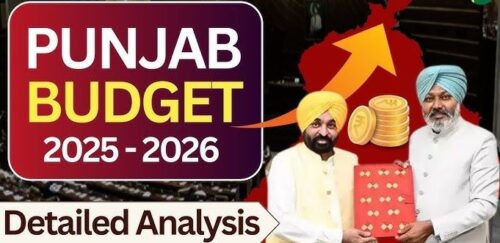
Since taking office in 2022, the government led by Chief Minister Bhagwant Mann has repeatedly come under criticism for decisions considered undemocratic, centralised, and financially reckless. Many political observers argue that the administration, instead of strengthening institutions and democratic participation, has gradually shifted more power into the hands of a few individuals. The perception that key decisions in Punjab are influenced or dictated by the AAP leadership in Delhi has fuelled questions about whether the state is truly being governed by the mandate of Punjab’s voters or by an external command structure. This centralisation, critics say, has weakened local autonomy and undermined the basic spirit of federal democracy.
A major concern has been the pattern of financial mismanagement. Throughout this period, the Punjab government has borrowed enormous amounts of money, while critics and constitutional authorities, including the Governor, argue that these borrowings have not been used for long-term development. Debt has risen significantly, yet capital investment — the kind that builds infrastructure or assets for future generations — has not kept pace. Much of the borrowed money appears to have been spent on routine expenditure, interest payments, and politically visible projects rather than lasting improvements. The widening gap between debt accumulation and productive investment has raised serious questions about the government’s fiscal priorities.
One of the most frequently mentioned areas of wasteful spending is the unprecedented scale of government advertising. Opposition leaders and analysts claim that hundreds of crores have been poured into advertisements across newspapers, television channels, and social media platforms. These ads, often celebrating routine government work, are alleged to serve the political interests of AAP more than the informational needs of the public. This spending pattern gives the impression of a government more focused on self-promotion than on solving Punjab’s deep-rooted economic and social problems. When compared with the state’s growing debt burden and struggling public services, such extensive advertising is increasingly viewed as irresponsible and politically motivated.
The government has also been accused of governance without accountability. Reports of incomplete projects being publicly inaugurated, inconsistent data in government reports, and discrepancies flagged by oversight institutions raise doubts about administrative transparency. Critics point out that while large announcements and ceremonial inaugurations are widely publicised, many projects on the ground remain far from completion or fail to deliver the promised benefits. Opposition parties argue that this pattern reflects a governance style that prioritises optics over outcomes, and headlines over honesty.
Another issue that has drawn significant criticism is the erosion of Punjab’s autonomy in certain administrative matters. Decisions such as handing over security responsibilities of key institutions to central forces, without broad public consultative processes, have been portrayed as undermining Punjab’s rights within the federal structure. Critics say these actions demonstrate a willingness to surrender state authority, contradicting the democratic mandate that demands protection of regional autonomy. This perception has intensified when combined with concerns that the real decision-making power may lie outside Punjab.
At the same time, industries and developmental bodies have complained about lack of support and weakening institutions. Financial withdrawals from bodies meant to support small industries, delays in policy implementation, and inconsistent industrial promotion strategies have created a sense that the government’s economic decisions are driven more by short-term publicity goals than by long-term development planning. The contrast between massive spending on image-building and limited investment in infrastructure has furthered the narrative of mismanagement.
Altogether, these criticisms present a picture of a government that has struggled to balance publicity with performance, and political control with democratic consultation. Whether these characterisations are completely accurate or partly exaggerated, what is clear is that concerns regarding undemocratic decision-making and wasteful expenditure have grown steadily since 2022. For many observers, the period under Bhagwant Mann has highlighted the risks of centralised leadership, unchecked borrowing, and governance that prioritises narrative over necessity — challenges that Punjab will continue to grapple with unless corrective measures are taken.